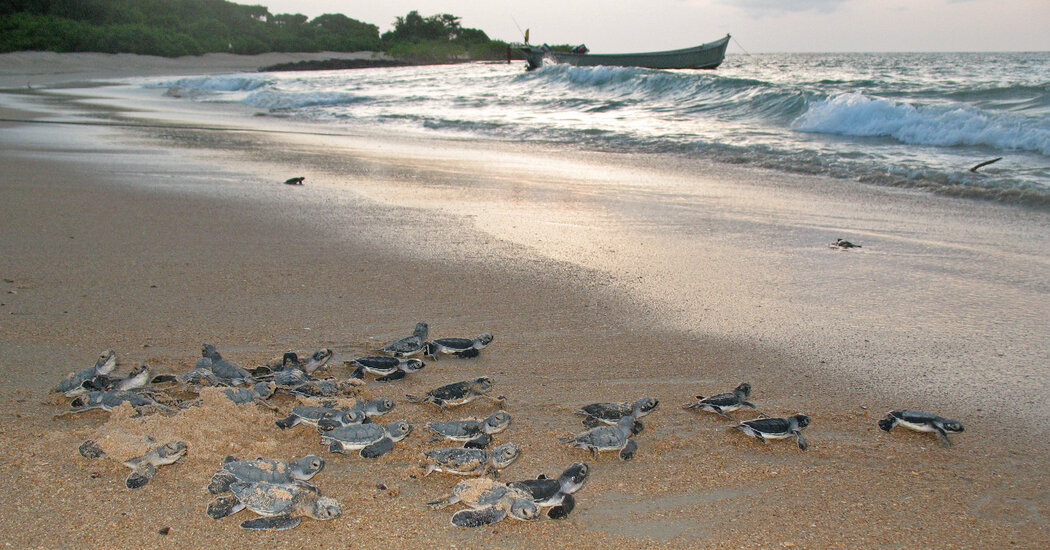Each year, thousands of baby green sea turtles clamber across a beautiful, white-sand paradise that is one of the largest hatching sites of this species in the Atlantic, adorably making their way to the sea. There’s one noticeable absence: people.
The spectacular hatching events take place between August and December on Poilão Island, a tiny, uninhabited speck off the coast of Guinea-Bissau in West Africa. It is the southernmost island of the 88 that make up the Bijagós archipelago, a UNESCO biosphere reserve. Last year, turtles laid more than 44,000 nests on its 1.4 mile-long beach.
While the masses of turtles seem to have little trouble finding the spot to lay their eggs — some swim more than 600 miles across the North Atlantic — it’s hard to imagine somewhere more challenging for human turtle-lovers to reach.
The country’s tourism minister, Alberto Demba Touré, said that access is a main challenge. “We want to increase the tourists who go to the Bijagós,” he said. Last year, UNESCO declared its support for the Bijagós Islands to seek World Heritage List status, which, if successful, would increase its visibility and strengthen its environmental protections.
Turtle conservation programs have become a staple of resorts in many popular destinations, including in Hawaii, Mexico and throughout the Caribbean. Guinea-Bissau may like to capture a meager sliver of that pie, but it would be with steep challenges.
Politically fragile Guinea-Bissau has very little infrastructure and is one of the world’s poorest and least touristed nations. Most flights to Bissau, the country’s sleepy capital on the mainland, require a connection in Lisbon or Dakar, Senegal. Then, from Bissau, it’s a bumpy one-hour drive to the coast, and five to seven hours in a speedboat (depending on the route) to Poilão Island.
A limited number of tourists, usually no more than a dozen at a time, are allowed to visit the Poilão Island, which is part of the João Vieira and Poilão Marine National Park. The island is considered sacred by the archipelago’s residents and no construction is allowed on it.
A plane, to a truck, to a speedboat
Last fall I traveled to Poilão at the height of hatching season to witness the baby turtles make their way from nest to sea, and to see how the local workers monitor and ensure the survival of the tens of thousands of hatchlings each year.
I started in Bissau, a riverside city of half a million, after flying there from my home in Dakar….
Click Here to Read the Full Original Article at NYT > Travel…
